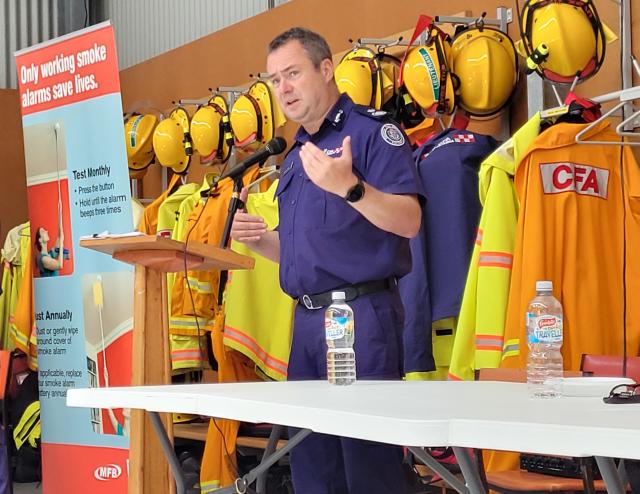The Country Fire Authority has settled into the new changes of the past few years and looks to the future to build even stronger.
The CFA has undergone a restructure as it had merged more closely with the Fire Rescue Victoria, formerly known as the Metropolitan Fire Brigade.
While concerns have been raised regarding the viability of fire response in Victoria due to the recent annual reports showing volunteer numbers have dropped by 2,000 in the last two years.
The CFA’s Deputy Chief Officer for the South East region, Trevor Owen, says there isn’t a problem in the CFA, but there is always more that can be done.
“We are prepared, can we do more to be prepared? Of course,” he said.
When it comes to volunteer numbers, the areas like Pakenham aren’t losing members but have a high turnover rate due to the large number of younger members.
Owen said “In our areas we have what I call the ‘churn’, where we have a lot of 17, 18 year olds that join, but they grow up and have to move away for work or cheaper housing.”
“They will stay in the CFA but move to another branch when they get older, so we have more and more that come in to replace them,” he said.
The South East volunteers have an average age of 45, while most other rural areas have an average in the 50s.
This presents the challenge of having to keep up the training for the high number of recruits, however for Owen this also is positive because the South East plays such a central role for the firefighting in wider Victoria.
“The outer areas of Victoria are aging in their volunteers, so it is a good thing that our younger members can move out to those branches,” he said.
Furthermore, the South East is even more important when it comes to critical fire response in wider Victoria.
Trevor Owen describes this as the ‘Surge Capacity’ in large bush fires.
“When there is a bushfire in rural Victoria, the metro areas are crucial for a large and rapid response to be directed toward it,” he said.
“If there is a fire in Gippsland for instance, the brigades of the South East Metro are heavily relied on.”
While Owen has gone through the turbulent recent years of merger with the FRV, he believes it has settled and cleared some of the difficulties of management prior.
“I believe the integrated model worked well, but it was hard,” he said.
Prior to the merger the CFA was an integrated body with the MFB, where it oversaw the brigades, both the career and volunteer members, in the locations of country Victoria.
Now the CFA exists in ‘co-location’ with the now called FRV, the CFA oversees the volunteers only and the FRV oversees the career firefighters.
“It was hard to look after both career and volunteer members,” Owen said.
“Volunteers have to be worked with in a much more flexible way around their own careers, while career members work regular shifts and have their own needs.”
While turbulence and anxieties of the merger have dissipated.
“Relations between careers and volunteer members have settled,” Owen said.
“Many in the CFA were concerned this was them being pushed out, but we’re still the main force in the area and in many ways the CFA and FRV rely on each other.”
Of the South East area, there are 221 brigades, 12 of them are run by the FRV, the rest are CFA.
As of 6 March there is 8,428 volunteers enrolled across the South East brigades.
“Every single CFA brigade that existed prior to the merger is still fully operational today.” Owen said.
In Cardinia Shire, there are 23 brigades, Pakenham is the only one run fully by FRV employees.
Owen describes the situation as still separate operationally but more centralised in working together.
“When it comes to actual firefighting, it will be decided who responds to what, given what the situation is,” he said.
“Many times we will work together, for instance, the FRV will rely on the CFA specialised equipment for bushfires that their trucks may not have.”
For Owen the situation fixed many issues before and showed that the CFA isn’t going anywhere.
Owen’s next objective is to get more people to join and get more and more prepared for the future.
“We have had a good three years with consistent wet summers, but that is over from now, the next years are projected to be dry,” he said.
“We have to combat any complacency that has settled in from the last few years.”
While Owen ultimately implores more men and women to get involved for the service and for themselves.
“We take anybody, we give people good training, good skills and good community people,” he said.
“Once people join they usually stay for life, for the people, the community and service, I encourage anybody to join.”







